
Flexible Pipe Design
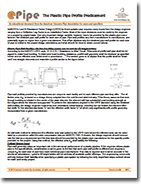 |
The Plastic Pipe Profile Predicament |
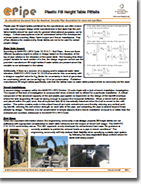 |
Plastic Fill Height Table Pitfalls |
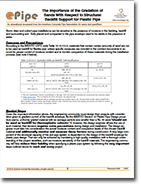 |
The Importance of the Gradation of Sands With Respect to Structural Backfill Support for Plastic Pipe This ePipe is to be used with YSK 144: A User’s Guide: Adhering to Federal Regulation 23CFR625 in the Design of Buried Culverts. |
 |
A User’s Guide: Adhering to Federal Regulation 23CFR625 in the Design of Buried Culverts |
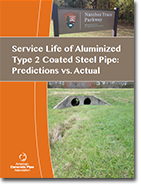 |
Service Life of Aluminized Type 2 Coated Steel Pipe: Predictions vs. Actual The pipe culverts in question are, at the time of this inspection, approximately 33 years old. This inspection consisted of visual observations of the inside (water side) of the culverts. Usually the water side of metal pipe experience earlier and greater wear than the soil side because of service conditions (including abrasion), oxygen exposure, and replenishment. The lowest water pH and resistivity for those sites as shown in the aforementioned report are 7.0 and 2609 respectively. Most are higher than 7.0 and 5000 and, therefore, not considered harsh conditions by traditional environmental criteria. It is apparent that abrasion is a factor and should be considered as such in any metal pipe durability assessment. |
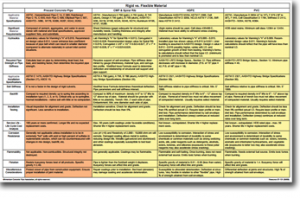 |
Rigid vs. Flexible Material Resource # 07-131 (Online only; printable using legal size paper) This document lays out various specification requirements for RCP, CMP, HDPE, and PVC including material requirements, hydraulics, pipe strength or stiffness, installation, soils, corrosion resistance, flammability, flotation, and more. |
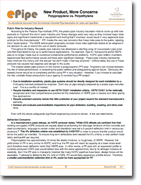 |
New Product, More Concerns – Polypropylene vs. Polyethylene Resource #e-009 Throughout its history, the plastic pipe industry has developed a startling array of unsuccessful pipe products that have failed to live up to performance expectations. PPI mocks the very real concerns that these risks pose to the public, labeling them “scare tactics.” The ACPA and prudent engineers consider those risks legitimate factors to be weighed in the decision to use or restrict the use of plastic products. |
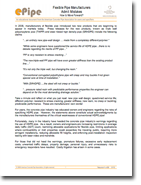 |
Flexible Pipe Manufacturers Admit Mistakes Resource # e-006 For years, the concrete pipe industry has educated owners and engineers regarding the risks of specifying HDPE pipe. However, the statements in this document constitute actual acknowledgments by the manufacturers themselves of the critical weaknesses of conventional HDPE pipe! |
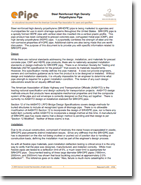 |
Steel Reinforced High Density Polyethylene Pipe Resource # e-003 This document provides information specific to SRHDPE pipe and offers insight that should cause designers and owners to question claims about this new product. How is the pipe designed to support dead and live loads initially and long term? What national specifications are there for installation of SRHDPE pipe? |
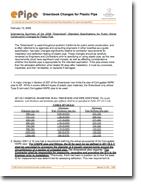 |
Greenbook Changes for Plastic Pipe Resource # e-001 The “Greenbook” is used throughout southern California for public works construction, and is often referred to by agencies and consulting engineers in other localities as a guide specification. It has been changed significantly in 2009 relative to contractor requirements for installation and deflection testing of plastic pipe. These changes should be carefully reviewed by Engineers and Contractors prior to specifying or using plastic pipe, as the new requirements could have significant cost impacts, as well as affecting considerations whether this flexible pipe is appropriate for the intended application. |
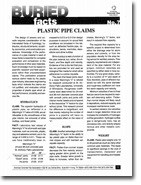 |
Plastic Pipe Claims This publication presents various claims made by the plastic pipe industry, discusses engineering facts which indicate the claims are not justified, and evaluates critical properties of plastic pipe which affect performance, durability and service life. |
 |
The Truth Behind the Greenbook Acceptance of HDPE Specifications (YSK Bulletin 101) March, 1996 Last fall the American Public Works Association’s Joint Cooperative Committee, which publishes the Greenbook, accepted specifications for HDPE pipe. There has been much discussion about why the Greenbook reached that decision. Meanwhile HDPE manufacturers have used this acceptance in their promotional campaigns. |